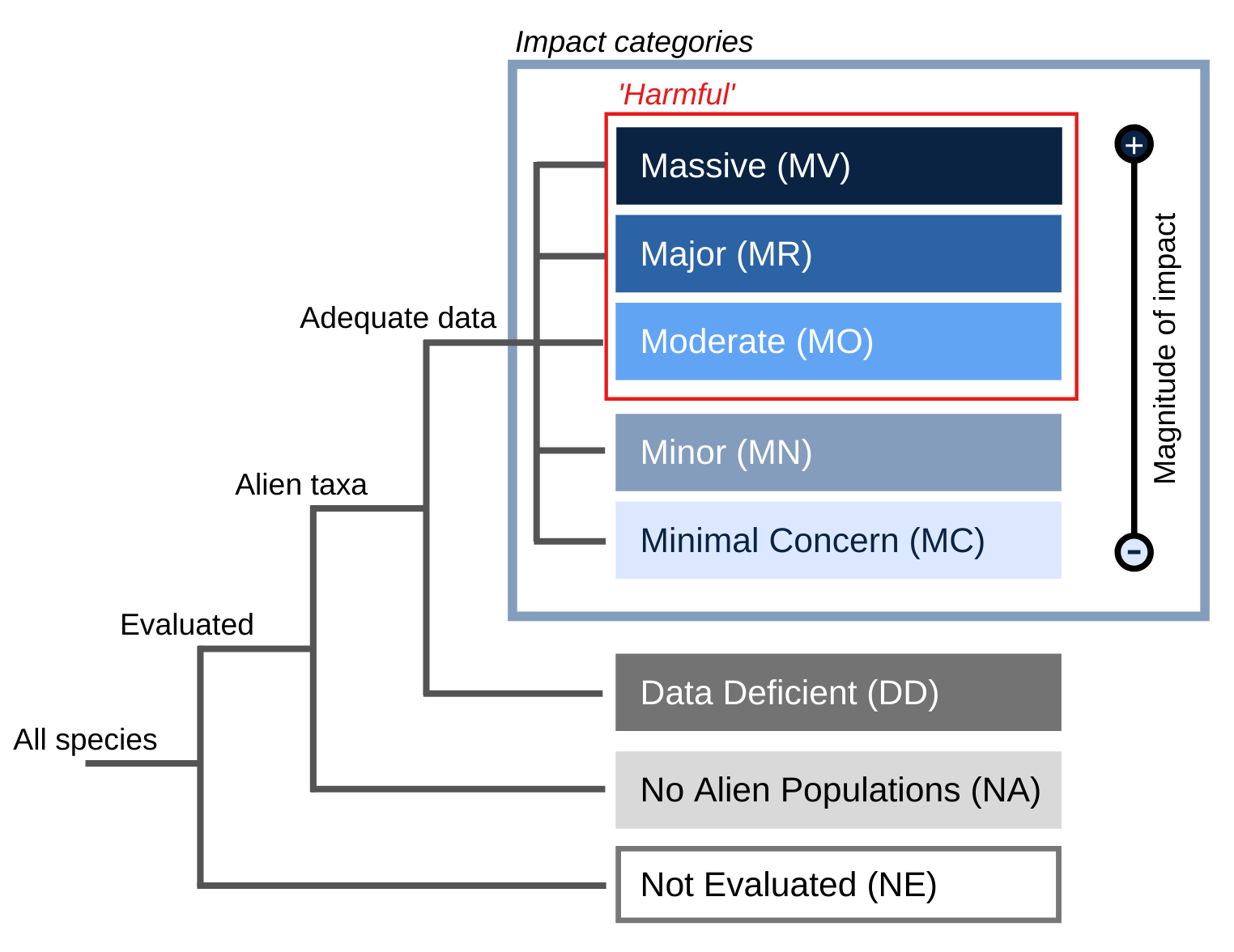- General
- Distribution
- Impact
- Management
- Bibliography
- Contact


Dioscorea tamnifolia , Salisb.
Helmia bulbifera , (L.) Kunth
Dioscorea bulbifera , L. var. veraPrain & Burkill
Dioscorea crispata , Roxb.
Dioscorea dicranandra , Donn.Sm.
Dioscorea heterophylla , Roxb.
Dioscorea pulchella , Roxb.
Dioscorea tenuiflora , Schltdl.
Smilax decipiens , Spreng.
Plant microfossil analysis from the Me' Aure' Cave in Moindou, New Caldaonia, and the Yuku rock sheltor in Papua New Guinea suggests that D. bulbifera or a closely related precursor was present in these regions between 2700-18000 YBP (Horrockset al, 2007a;Horrockset al, 2007b).
Principal source: Schultz, 1992;
Morisawa, 1999;
Horvitz and Koop, 2001.
Compiler: National Biological Information Infrastructure (NBII) & IUCN/SSC Invasive Species Specialist Group (ISSG)
Review: Forest Starr and Kim Starr, Botanical Research Associates United States Geological Survey Biological Resources Division Makawao, Maui, Hawaii USA
Publication date: 2008-01-14
Recommended citation: Global Invasive Species Database (2025) Species profile: Dioscorea bulbifera. Downloaded from http://www.iucngisd.org/gisd/species.php?sc=1220 on 17-11-2025.
Preventative measures: D. bulbifera should not be recommended as an ornamental plant. It is classified as a Class A Noxious Weed in Alabama and as a noxious weed in Florida (NRCS, 2007).
Chemical: Morisawa (1999) writes that \"RoundUp, a nonselective herbicide, will kill the vines but the tuber will most likely resprout...Garlon 4 applied at a 10% concentration provides good control when applied with the basal application method. Completely encircle the lowest 30-61cm of the stem or trunk with the herbicide and form a band at least 15cm wide. Garlon 4 (10% concentration) and Garlon 3A (50% concentration) provide excellent control when applied to a cut surface.\" Wound vines with a hatchet and apply herbicide during the growing season (Morisawa, 1999).
Biological: An ongoing study by Sambura and Pemberton (ARS, 2007) seeks to identify natural insect herbivores of D. bulbifera in Nepal. So far the researchers' have identified a possible biological control agent in the Nepalese air potato beetle, Liliocerus spp.













